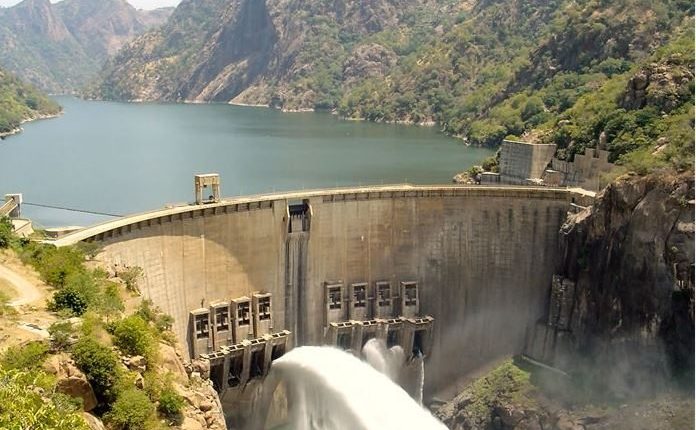Director General of National Emergency Management Agency (NEMA), Mustapha Ahmed on Wednesday disclosed that there is no standing budgetary provision to cater for the victims of the Lagdo Dam flood.
Mr. Ahmed, who gave the hint in Abuja at the sideline of the Emergency Coordination Forum of Disaster Management Stakeholders, however, expressed the Agency’s resolve to support the State Governments through provision of temporary shelter for the displaced persons who will be affected by the flood.
Mr. Ahmed said: “We don’t have any standing budget for this yet. The gates, you’re all aware, Lagdo Dam was opened and already been closed as you’re all aware. So, the extent of the damage will not immediately be known. It’s after the flood season that’s when we can do assessment, to assess what is damaged to know what the budget would be. Without assessment we can’t know what the budget will be like.”
On the modalities for the setting up of shelter for the displaced persons, he explained that the establishment of shelter is solely the responsibility of the State Governments.
“Activating of IDP camps is for the State, we have advised them accordingly. As you are aware, we’ve met with the Governors Forum, we also met them at NEC, we gave them all the advice that needs to be given. And most of the States have been very proactive, so we will probably see a major difference this time around.”
Mr. Ahmed however noted that the Agency will support the Subnational Governments by providing temporary shelter.
He said: “We are providing temporary shelter to support the states, but these states have to provide the IDP camps, NEMA does not provide IDP camps to states, the state governments do that, if there’s any need for support we will give them temporary shelters or tents”.
While noting that the Lagdo Dam might commence full discharge of excess water in Cameroon, if heavy rain persists, the NEMA helmsman said: “This particular meeting has been necessitated by the notification received from the Ministry of Foreign Affairs, of the modulated release of water from Lagdo Dam in Cameroon on the Benue River. The country has commenced the release of water from the Dam at the rate of 200 cubic meters per second, which is about 18 million cubic meter of water per day.
“This release may result to all front-line states experiencing flooding in subsequent days and weeks. It is of great importance to note that the Dam might commence full discharge of excess water from the Dam if the region experiences heavy rainfall.”
The NEMA boss also noted that there is no standing budget for impact on the flooding from the Lagdo Dam, adding that, there won’t be any standing budget until there is an assessment.
While giving update on the water releases from the Cameroonian Lagdo Dam and the present situation of flooding in Nigeria, Director General of Nigerian Hydrological Services Agency (NiHSA), Dr. Clement Nze disclosed that: “as at today, 30th August, 2023, the water level at our monitoring station in Makurdi, Benue State was 8.99m as against 9.75m that was recorded on same date in 2022. This indicated a reduction in the observed flow of last week and normal flow In the flow of River Benue system.
“The flow level on the River Niger system is considerably stable as well. The level of River Niger at Niamey (Niger Republic), upstream Nigeria, is normal with a flow level of 4.35m. Situation reports from the Inland dams (Kainji and Jebba) on River Niger and Shiroro on River Kaduna Indicated @ normal flow regime. The present reservoir level at Kainji dam is 134.64m (maximum reservoir level is 141.83m). This shows that there is room to impound waters into the reservoir from the Upstream as the inflow increases on the River Niger system.
“The flow level at our monitoring station downstream of the Confluence of the two transboundary rivers (Niger and Benue) in Lokoja, Kogi State, was 8.66m as against 8.36m that was recorded on same date in 2022. Though still within the normal range, the increase in flow level is due to the internal runoff that were generated from the inland rivers due to their increased flow levels occasioned by their catchment rainfall patterns.”
While noting that Nigeria is at the downstream of the 9-member countries of the Niger River Basin, namely: Benin, Burkina Faso, Cameroon, Chad, Cote d’Ivoire, Guinea, Mali, Niger and Nigeria, he maintained that “the situation calls for more watchfulness on the part of Nigeria.”
According to him, “the months of July, August, September and October of every year signify period of heavy rainfall, flooding and flood disasters in most parts of the country. The floods are often aggravated by the transboundary inflows of rivers Niger and Benue from outside the country.
“Dam water releases are a significant part of reservoir operations to protect the integrity of the dam and dams failure and to, even, reduce/regulate flooding of the adjacent communities. Therefore, water releases from the Lagdo dam are normal reservoir operations and the quantum of water that was released is negligible to cause any flooding in Nigeria.”
To this end, he argued that: “it is highly imperative to deploy high level of preparedness on the part of Federal and State governments (particularly, the Niger Delta region including: Adamawa, Taraba, Benue, Nasarawa, Kogi, Kebbi, Niger, Edo, Delta, Anambra, Ebonyi, Bayelsa, Cross-Rivers, Rivers), citizens including all agencies and stakeholders that are charged with disaster response and reduction to step up action and put in place measures to mitigate and avert any eventual flood disaster.”
READ ALSO FROM NIGERIAN TRIBUNE
WATCH TOP VIDEOS FROM NIGERIAN TRIBUNE TV
- Relationship Hangout: Public vs Private Proposals – Which Truly Wins in Love?
- “No” Is a Complete Sentence: Why You Should Stop Feeling Guilty
- Relationship Hangout: Friendship Talk 2025 – How to Be a Good Friend & Big Questions on Friendship
- Police Overpower Armed Robbers in Ibadan After Fierce Struggle






